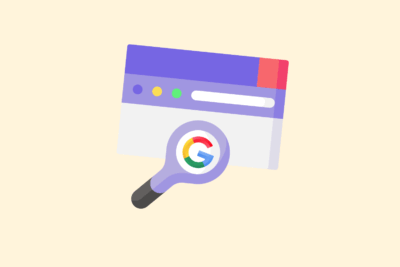SEO for ChatGPT: this is how to get visible in AI search engines

More and more people are using ChatGPT as a starting point in their search for information. Where Google used to be the starting point, users now ask their questions directly to AI. This requires a different way of optimizing.
As an SEO specialist, I see examples of this shift every day. The classic SEO approach remains relevant, but an extra layer is added: becoming findable in language models such as ChatGPT.
Why SEO for ChatGPT matters now
ChatGPT is not a search engine like Google. Instead of a list of links, AI provides direct answers. Those answers are based on the model’s training data, combined with recent information via integrations (such as Bing or external plug-ins). If your content is unclear or does not appear reliable, AI is less likely to use it as a source.
What I often notice is that more and more companies are losing visibility in this new layer of search behavior. This is not because their content is of poor quality, but because the content is not aligned with how AI reads, understands and responds.
What makes content findable in ChatGPT?
ChatGPT does not work like a crawler, but reads your page from top to bottom, just like a real visitor. In doing so, AI pays attention:
- Is the content relevant? Does your content match the question a user is asking?
- Is the structure clear? Is the text logically structured and are clear headings used?
- Expertise and reliability: does the content come across as written by someone knowledgeable?
These aspects align well with Google’s helpful content system. Content written for humans and not algorithms is now also seen as valuable by AI.
Getting started with SEO? Feel free to get in touch.

This is how I optimize content for ChatGPT
I always work with some set principles to make content more visible in ChatGPT:
1. Write as people ask questions
SEO texts are often written using keywords. For ChatGPT, that doesn’t work as well. A text built around natural questions helps AI better understand the content. Do this not only in headlines, but also in the structure of paragraphs.
Thus, the language model quickly understands what the content is about. AI then uses the well-constructed text as an answer snippet.
2. Work with concrete, complete answers
ChatGPT and similar AI models look for bite-sized chunks of information. Text models don’t work well with woolly text or half-answers, but a clear, direct explanation. Give a clear answer to the question directly in the first few sentences, so AI can fall back on this more quickly. Then elaborate on these.
This way I increase the chance that the text will be directly usable in a generated response.
3. Focus on content depth
AI ignores superficial pages and prefers in-depth, well-researched content. Adding depth with examples, comparisons and context makes text more valuable to AI and users. Avoid unnecessary repetition, but provide enough explanation to be seen as an authority.
This way you come across as trustworthy without making your content unreadable.
4. Make smart use of entities and relationships
Language models recognize connections between concepts, marks and themes. I use these elements naturally throughout the text. Because of those natural connections, AI better understands what the content is about.
5. Keep your content current
AI systems, such as Perplexity and the paid version of ChatGPT, use live data in part. If your content is outdated and lacks recent examples, it is simply less likely to be included in search results. Updating important pages regularly ensures that your information remains current and attractive to AI…. (Think service pages, knowledge base articles and FAQs). This is something I recommend you do as well.
What does this mean for your SEO strategy?
SEO for ChatGPT strengthens your existing strategy and future-proofs your brand. Classic SEO remains important for your visibility in Google. If you want your company to be visible even in AI-driven answers, you need to think differently about content.
My advice is: start small. Customize one existing page based on the principles I explained to you. Measure if you are mentioned more often in tools like ChatGPT, Perplexity or Gemini. Work further on your findability from there.
Summary
The shift to using AI search engines is not hype, but a fundamental change in how people consume information. Those who develop content now that fits how AI models reason will soon be ahead of competitors who stick with old SEO methods.
Want to know how your current content scores on AI findability? Or are you curious about a strategy to apply GEO (Generative Engine Optimization) in your industry? Feel free to send me a message. I’d love to help you with good data, the right structure and a clear approach.






